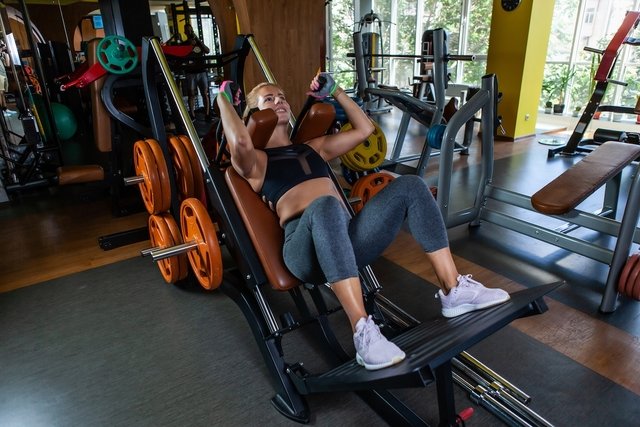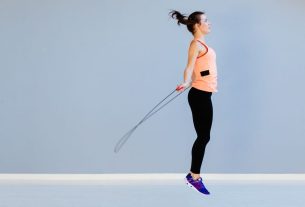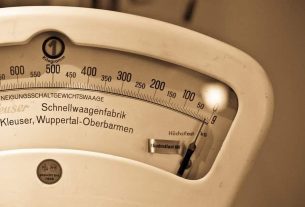The hack squat is an exercise that serves to strengthen the legs and glutes, done on a machine called a hack, which conducts the squat movements, and therefore one of its benefits is to avoid damage or injuries to the spine or knees, especially in people who are starting training.
This type of squat was created by a weightlifter called George Hackenschmidt, being a variation of the common squat, which also works other muscles, such as the hip and calf flexors, for example.
Hack squats must be done in gyms on the hack device, with guidance from a physical education professional, who can indicate whether or not to use weights on the device, or even other squat options, according to each person’s physical condition. Check out the main squat options.

What is it for
The hack squat serves to strengthen the muscles in the lower body, especially the quadriceps in the thigh, but it also works the hamstring muscles in the back of the thigh, glutes, calves and hip flexors.
Furthermore, the hack squat also allows you to work your abdominal and back muscles, since one of the squat movements is to stand completely upright on the machine.
11 benefits of hack squats
The main benefits of hack squats are:
1. Prevents spinal and joint injuries
Hack squats prevent injuries to the spine and joints, such as knees and hips, since the movements are performed on the machine in a more stable and safe way than in other types of squats.
2. Perform movements in a stable manner
Hack squats allow you to perform movements in a more stable way, without the person needing to worry about body balance or load movement, as in other types of squats or exercises.
3. Builds muscle
Hack squats develop muscles and increase muscle strength, especially in the quadriceps in the thigh.
4. Promotes muscle hypertrophy
By allowing you to add load to the exercise and build muscle fibers, the hack squat promotes muscular hypertrophy of the quadriceps of the thigh.
5. Improves posture
Hack squats improve spinal posture, as the exercises are performed on the machine with the spine aligned.
6. Increases hip range of motion
Although the main focus of the hack squat is the quadriceps muscles, another muscle worked during the exercise is the hip flexors.
In this way, the hack squat also helps to increase the range of hip extension movements.
7. Works multiple muscle groups
The hack squat allows you to work several muscle groups at the same time, such as quadriceps, hamstrings, glutes, calves and hip flexors.
However, the focus of the hack squat is the quadriceps of the thigh, allowing you to increase your strength and hypertrophy.
8. Allows you to support weight safely
Since the hack squat movements are done on the machine, it is possible to support the weight or load safely, in a balanced way on both sides, minimizing injuries to the spine, shoulders or knees, as in other weight squats.
9. Allows you to use more load
The hack squat allows you to use more load than in other types of squats, such as squats with a barbell or dumbbells, for example.
10. Distribute load equally
The hack squat allows you to distribute the load evenly, without overloading the spine and minimizing damage from excess load or poorly executed movements from other types of weight squats.
11. Can be done by beginners
The hack squat can be done by people who are just starting to train, or by athletes or people with a history of injuries who need greater stability and stimulation for the quadriceps.
Furthermore, it can be done as the main exercise or as a complement to the Bulgarian squat, for example. See the benefits of Bulgarian squats and how to do them correctly.
To obtain the benefits of hack squats, the movements must be performed correctly and must be guided by a physical education professional.
How to do hack squats
To do the hack squat correctly, you must:
- Place the load on the hack machine, as directed by the physical educator. Beginners should not load or load lightly;
- Position yourself on the hack machine, placing your feet in front, shoulder-width apart, with your knees bent;
- Position the spine straight, on the back of the machine;
- Position your shoulders against the pads of the device;
- Release the safety catch, which is usually above the shoulders;
- Place your hands on the bar of the device;
- Inhale and make a “climbing” movement, extending your legs;
- Exhale, making the “down” movement slowly, bending your legs, until they are parallel with the device;
- Return to the starting position, performing the number of movements and series guided by the physical education professional.
When making the first movement, it is important to adjust the position of your feet so that your heel is firmly on the machine.
Furthermore, your spine and hips should never leave the cushions.

Sign up for our newsletter and stay up to date with exclusive news
that can transform your routine!
Warning: Undefined array key "title" in /home/storelat/public_html/wp-content/plugins/link-whisper-premium/templates/frontend/related-posts.php on line 12
Warning: Undefined array key "title_tag" in /home/storelat/public_html/wp-content/plugins/link-whisper-premium/templates/frontend/related-posts.php on line 13



